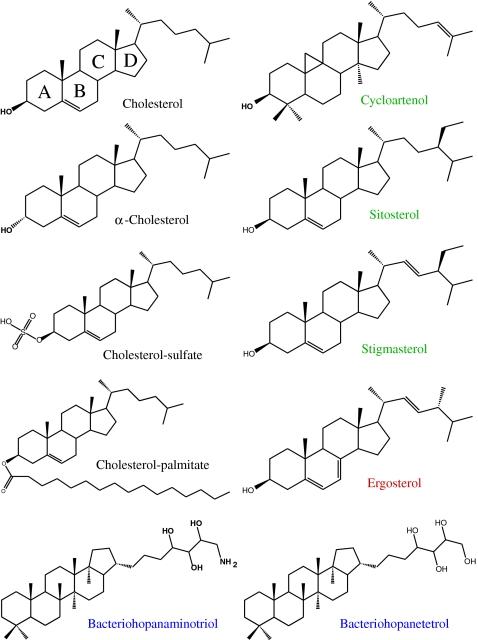What Are Sterols?
-
Posted by chen shanshan - Filed in Arts & Culture - 291 views
Sterols are essential components of the membranes of all eukaryotic organisms, controlling membrane fluidity and permeability. Sterols are the third class of lipids, which play multiple roles that either individually or collectively influence cell processes, and through charge and structure they are involved in DNA replication, protein translocation, cell recognition, signalling pathways, energetic, signal transduction, and cell trafficking. Sterols regulate biological processes and sustain the domain structure of cell membranes where they are considered as membrane reinforcers .
- What are the examples of sterols?
Cholesterol is the main animal sterol, while β-sitosterol, campesterol, stigmasterol, brassicasterol, avenasterol, and stigmastenol are major plant sterols present in vegetable oils at much higher levels than cholesterol is in animal fats.
- What Are the Types of Sterol?
In general, sterols are synthesized via the mevalonate pathway of isoprenoid metabolism. There are 1)mammalian sterols: Cholesterol is found in many biological membranes and is the main sterol of animals. It is often equimolar with phospholipids in many membranes. 2)plant sterols: Plants usually possess more complex sterol compositions. Cholesterol, campesterol (a 24-methyl sterol), stigmasterol and sitosterol (two 24-ethyl sterols), are major constituents of the sterol profiles of plant species. 3)fungi sterols: The main sterol found in fungi is ERG, which structure differs from that of cholesterol by the presence of additional double bonds, on the B-ring and on the acyl chain. 4) bacterial sterols: Primitive sterols such as hopanoids are produced by bacteria that develop in very extreme (temperature, acidity, pressure, ionic strength) conditions and are considered as good markers of geological samples containing organic matter.
- What Is the Function of Sterol Lipids?
Sterols are critical for the formation of liquid-ordered (lo) membrane states (lipid “rafts” ) that are supposed to play an important role in fundamental biological processes such as signal transduction, cellular sorting, cytoskeleton reorganization, asymmetric growth, and immune response. They have been proposed as key molecules to maintain membranes in a state of fluidity adequate for function. For instance, phytosterols have been recently shown to increase membrane cohesion in order to maintain plant membranes in a state of dynamics less sensitive to temperature shocks.

Figure 1. Molecular structures of mammalian, plant, fungus, and bacterial sterols. (Dufourc EJ, 2008.)
- Sterolsfor Research Uses
With wide coverage of the lipid systems for customized lipid-based product development, CD Bioparticles offers high purity lipids for research and pharmaceutical product development. CD Bioparticles’ Sterols for research uses consists of Oxysterols, Bile acids, Natural Sterols, Oxidized Sterols, Cholesteryl Esters, and Glycosylated Sterols.
CD Bioparticles’ services with customized delivery strategies, precise designs and modifications of drugs or drug-contained cargos, and advanced technical platforms can help you to solve the challenges you might meet, such as inferior lipids in the project, limited lipid options for customized lipid-based formulation, and tedious synthesis and production.
References
- Dufourc EJ. Sterols and membrane dynamics. Journal of chemical biology. 2008, 1(1-4):63-77.
- Dutta, Paresh C., et al. Formation, analysis, and health effects of oxidized sterols in frying fat. Deep frying. AOCS Press, 2007, 111-164.
